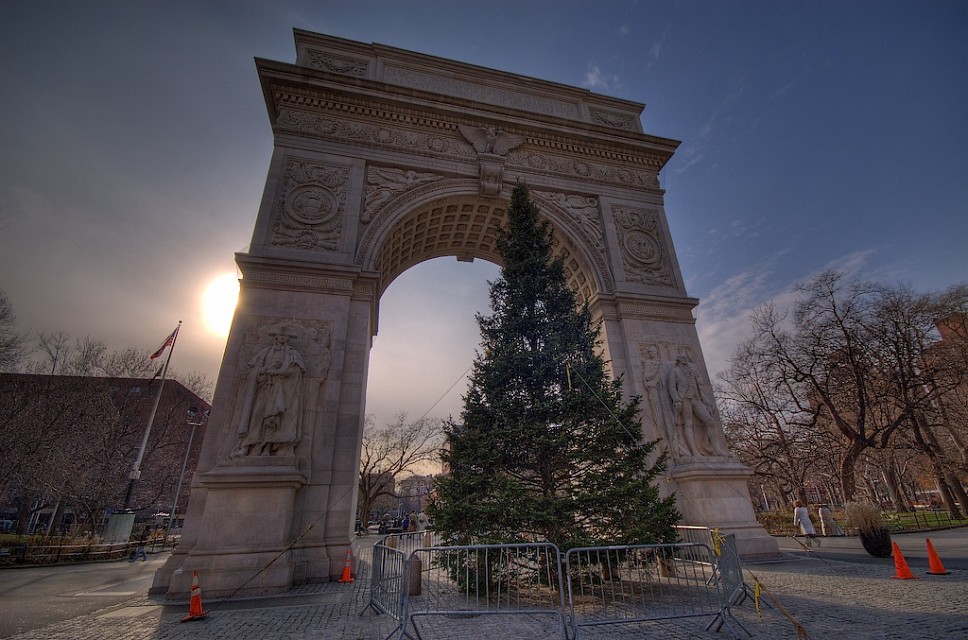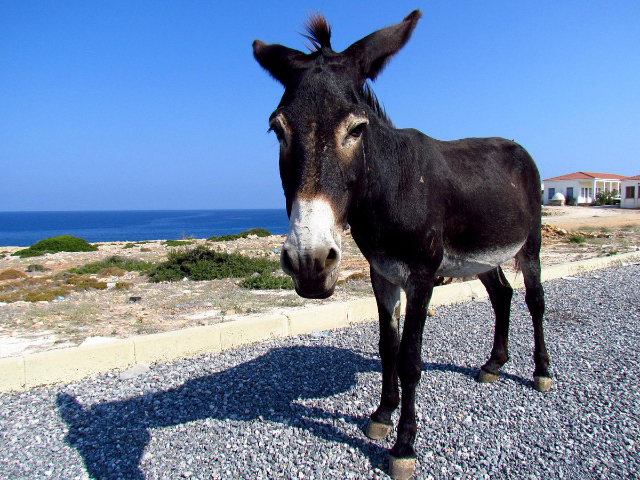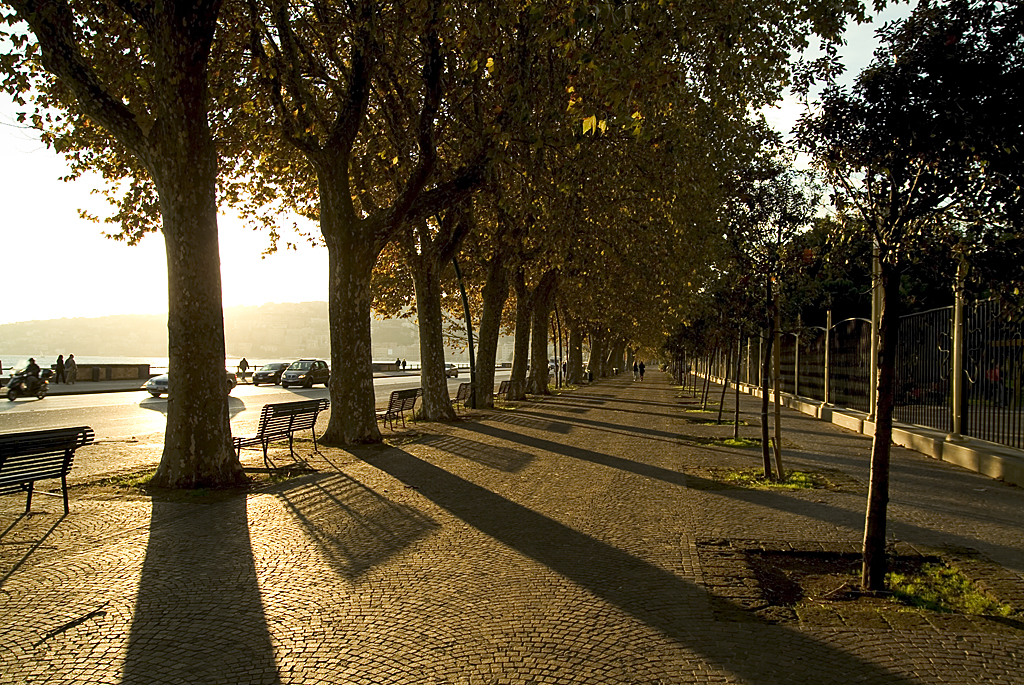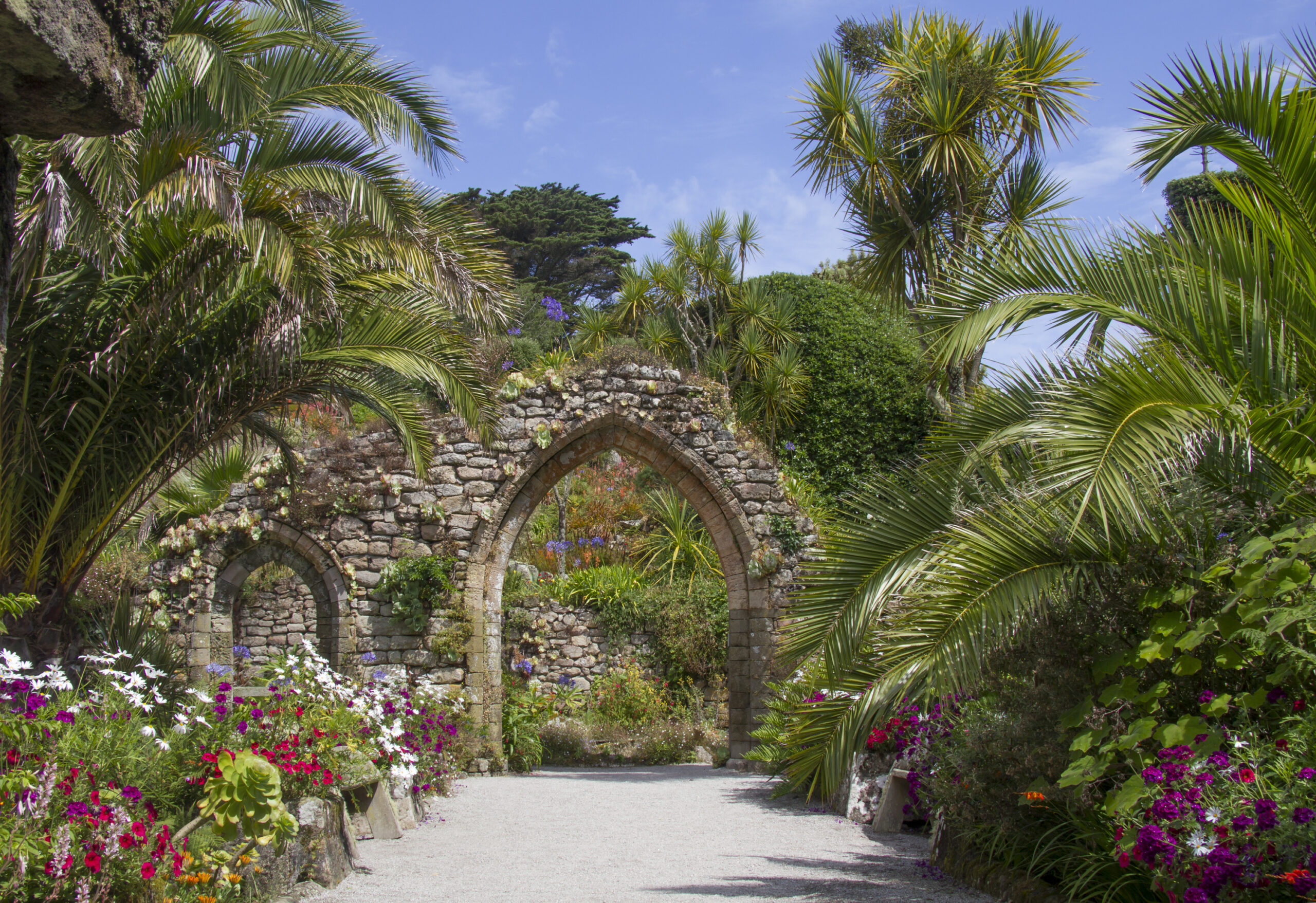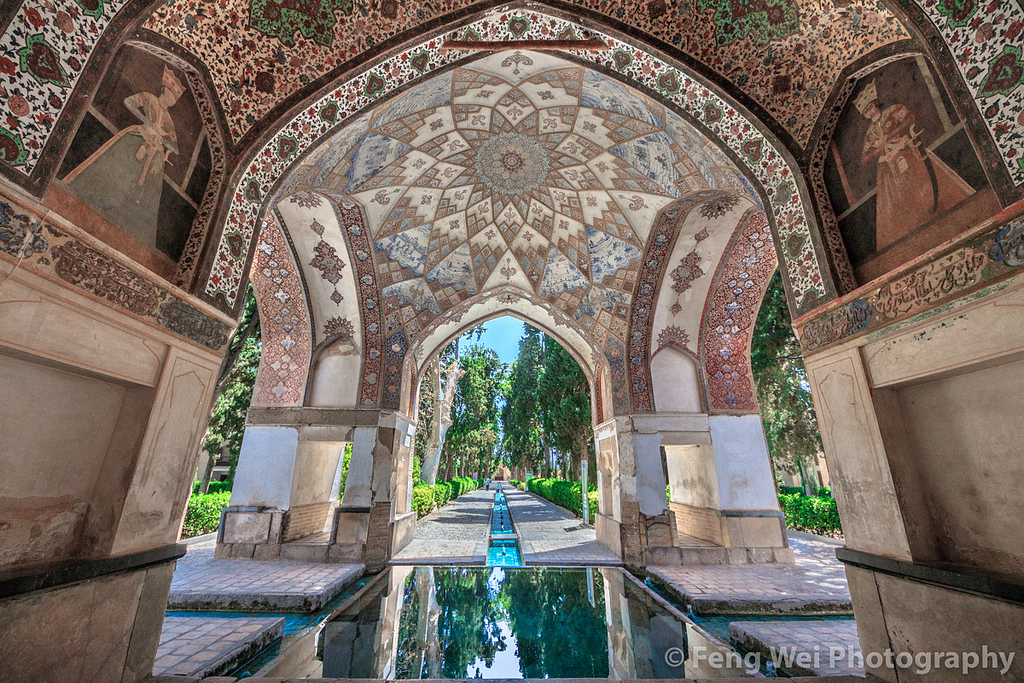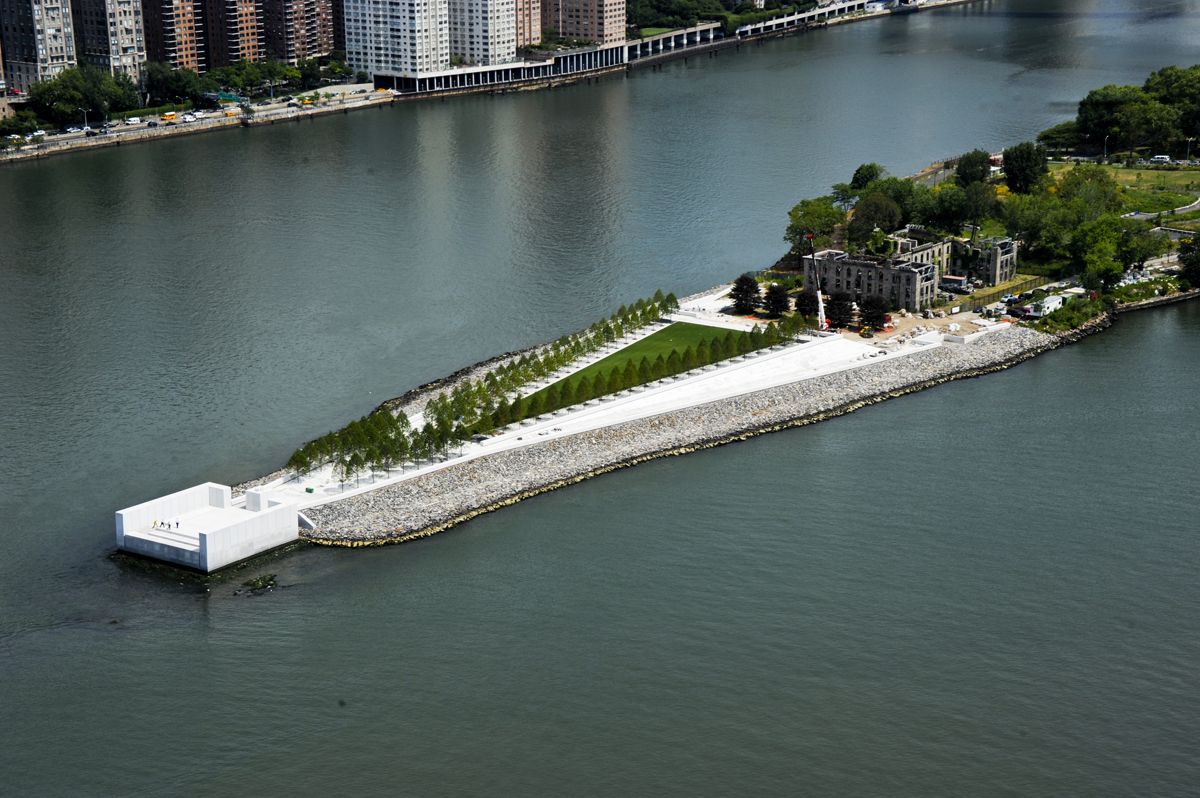Washington Square Park is named for George Washington (1732-1799), the commander of the Continental Army, who was inaugurated in New York City as the first President of the United States on April 30, 1789.
The land was once a marsh fed by Minetta Brook located near an Indian village known as Sapokanikan. In 1797 the City’s Common Council acquired the land for use as a "Potter’s Field” and for public executions, giving rise to the legend of the "Hangman’s Elm" in the park’s northwest corner.
Used first as the Washington Military Parade Ground in 1826, the site became a public park in 1827. Following this designation, prominent families, wanting to escape the disease and congestion of downtown Manhattan, moved into the area and built the distinguished Greek Revival mansions that still line the square’s north side. In 1838 the park hosted the first public demonstration of the telegraph by Samuel F.B. Morse. The marble Washington Arch, designed by noted architect Stanford White, was built between 1890-1892 and replaced a wooden arch erected in 1889 to honor the centennial of the first president’s inauguration. Statues of Washington were later installed on Arch’s north side – Washington as Commander-in-Chief, Accompanied by Fame and Valor (1916) by Hermon MacNeil, and Washington as President, Accompanied by Wisdom and Justice (1918) by Alexander Stirling Calder.
Other monuments in this park are John Quincy Adams Ward’s bust of steel innovator Alexander Lyman Holley (1890), Giovanni Turini’s statue of Italian-nationalist leader Giuseppe Garibaldi (1888), a World War I commemorative flagpole, and the central fountain which was moved from Fifth Avenue and 59th Street in the mid-1870s.
Washington Square Park was redefined socially and culturally throughout the 20th century. Following the Triangle Shirtwaist Factory fire in 1911, labor unions marched here. "Ashcan School" artists such as John Sloan painted in the park, and the bohemian community of the late 19th century.
